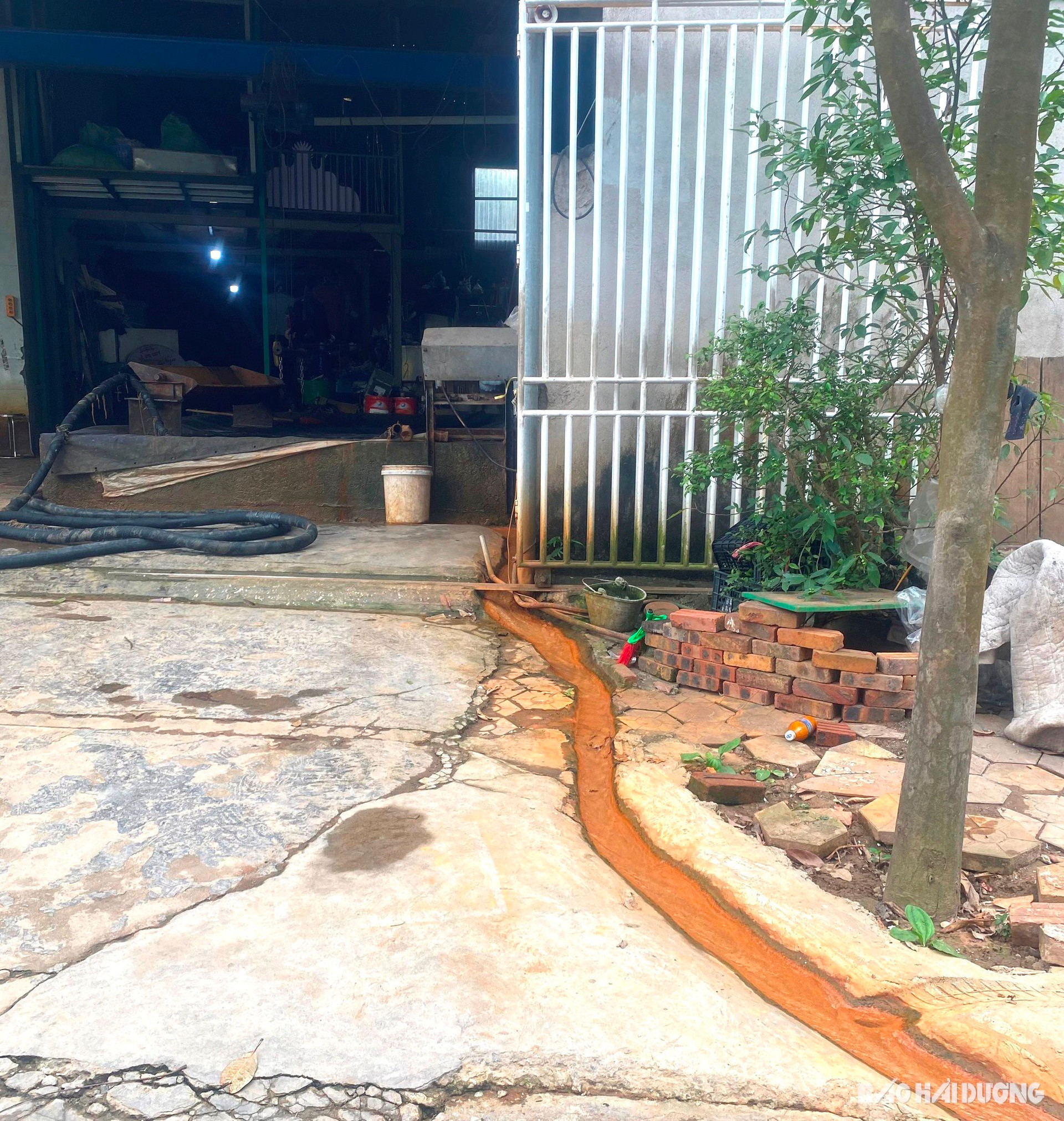Hai Duong City authorities have just requested 15 households in Lo Cuong rice paper village, Tu Minh ward to temporarily stop operations to fix violations. According to the roadmap, households producing in this polluting village will have to relocate or find solutions to thoroughly fix violations.

When this information was posted on Hai Duong Newspaper Fanpage, many readers were interested. Some commented: "Passing by is torture", "Every time I go in, there is a burning smell like burning tires from one end of the village to the other"...
Hai Duong Newspaper has had many news and articles reflecting on pollution in craft villages in general, and pollution in Lo Cuong rice paper craft village in particular, such as in the article "Environmental pollution in vermicelli and rice paper craft villages in Hai Duong is a pain" (June 27, 2024), "Lo Cuong rice paper craft village still generates pollution" (April 26, 2024)... With the naked eye when entering this craft village, you can see the chimneys from the boilers still discharging black smoke directly into the environment, the exposed yellow wastewater ditches overflowing onto the street, then the noise of machinery, dust, and the burning smell from the boiler...
Hai Duong City People's Committee requires that by September 25, rice noodle production facilities must register with Tu Minh Ward People's Committee their operation plan, specifically moving to a new location or, if they continue to produce in the craft village, they must correct violations within the prescribed time. In the long term, facilities must have a plan to convert production technology from using boilers to dry noodles to drying rice noodles with thermoelectricity to ensure environmental hygiene.
Hai Duong City People's Committee has a determined attitude because if we want to build a green, smart, modern, livable city, eliminating environmental pollutants is a must.
Previously, chairing the first August meeting of the Provincial People's Committee on the afternoon of August 1, Standing Vice Chairman of the Provincial People's Committee Luu Van Ban requested Hai Duong City to consider the plan to move the establishments in Lo Cuong rice paper craft village to another suitable location, requiring specific and detailed opinions from the people. From there, a detailed roadmap for the relocation plan will be developed.
In fact, there are many cases of craft villages polluting the environment like the Lo Cuong rice paper craft village. According to a recent report by the Department of Agriculture and Rural Development of Hai Duong, the province currently has 14/66 craft villages that do not have an environmental protection plan. 9/66 craft villages generate wastewater. These are the groups of craft villages that brew wine, make vermicelli, rice paper, and process agricultural products, but they do not have a centralized wastewater treatment system. 30/66 craft villages that generate emissions and dust are the groups of craft villages that brew wine, make vermicelli, rice paper, and process agricultural products, carpentry, etc.
Craft villages create livelihoods for many households in the province, creating jobs on the spot for many workers. However, trading the health and environment of the whole village for the livelihood of a part of the people is really unacceptable. In addition to strong measures such as what the Hai Duong City People's Committee is doing for the Lo Cuong rice paper craft village, in the long term, craft villages must consider relocating out of residential areas. Currently, all localities in the province have industrial clusters. This is a safe, long-term migration place that needs to be considered for households producing and doing business in craft villages. Relocating craft villages to industrial clusters and concentrated production areas will solve the problem of infrastructure, wastewater treatment systems, waste... from craft villages.
Of course, this is difficult, because when moving to concentrated production areas, business households will have to spend more money on renting premises and building new factories. Meanwhile, many production and business households in craft villages are small-scale, lack capital, and are unfamiliar with administrative procedures... Therefore, to "lift" polluting craft villages out of residential areas, it is necessary to actively participate and support local authorities to attract businesses to invest in building infrastructure for industrial clusters, meet the demand for production premises, create favorable conditions for production and business households in craft villages to agree to move out of residential areas to get preferential loans, support them with land lease procedures, establish businesses... to soon stabilize production at the new location.
KIM THANH